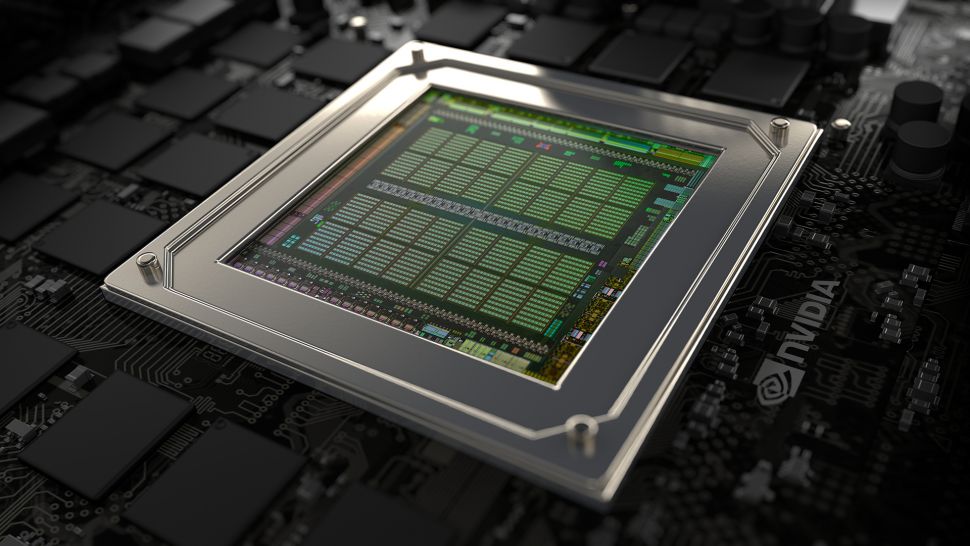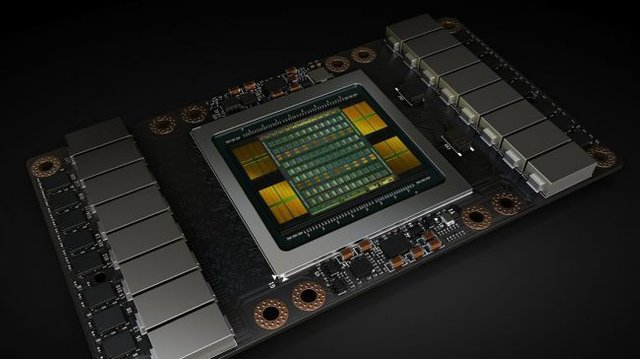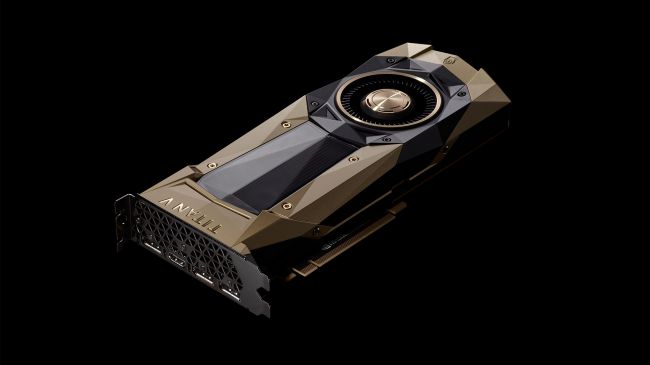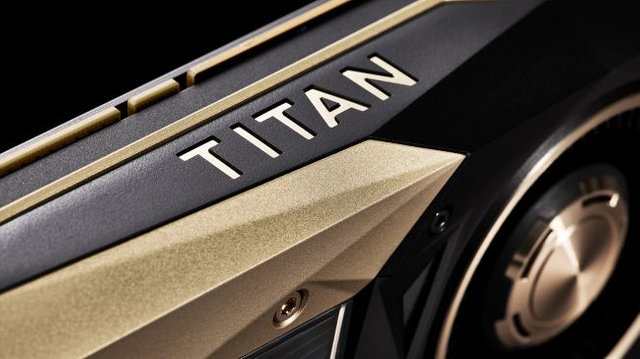
When it comes to the best graphics cards, Nvidia’s varied selection of titanic GPUs is matched by none. From the wickedly powerful, 4K graphics-pumping GeForce GTX 1080 Ti to the entry-level GTX 1050 – and everything in between – Nvidia remains the crown ruler of the GPU world.
However, because gamers always demand the highest levels of graphical ability and tech companies and researchers both require greater AI functionality and GPU computation, the best graphics card constantly need to become better. This is why Nvidia is hard at work developing Nvidia Volta – the next-generation architecture for professionals.
Nvidia actually has released two Volta cards already, back in 2017, but they were prohibitively expensive – as they were aimed at data scientists and professional artists – so, don’t expect to see them in the best gaming PCs any time soon. Still, we’re extremely eager to see what the next GeForce GTX cards will be, considering the massive performance leap we’re expecting.
However, if we were you, we wouldn’t expect to see Volta-powered GTX cards, as the architecture seems to be built entirely around AI and research use-cases. And, if leaked information about a GTX 1180 is to be believed, Turing is the architecture that will be behind the GeForce GTX 11 series cards.
Eager for an upgrade? Here's everything that we've heard so far.
Cut to the chase
What is it? Nvidia's next-gen, 12nm GPU line
When is it out? The Tesla V100 and Titan V are out now, but GeForce cards are TBD
What will it cost? TBD

Nvidia Volta release date
Rumour has it that Nvidia's Volta graphics cards could be gearing up to launch in Q3, 2018. A recent report by Tom's Hardware has pegged the release to a July launch, with AIBs receiving cards on, or around, June 15. That seems mighty specific to us, and we're still betting on a late August, early September reveal.
SK Hynix are reportedly ramping up production of GDDR6, which Nvidia are also reported to be utilising exclusively with their unreleased graphics cards.
When they first announced the arrival of GDDR6 Hynix mentioned they were “planning to mass produce the product for a client to release high-end graphics card [sic] by early 2018 equipped with high performance GDDR6 DRAMs.” I’m not the only one to think that is a reference to Nvidia and the release of GDDR6-based Volta GPUs.
Samsung have also announced their own GDDR6 memory is set to "play a critical role in early launches of next-generation graphics cards" which is playing into our suspicions of a relatively early 2018 launch. Though that could just because we're desperate for a new GPU launch to potentially salve the cryptocurrency crisis that's stolen all our graphics cards...
Samsung 16Gb GDDR6
These memory chips are also expected to be 20% more expensive than GDDR5 for manufacturers from the get-go - although eventually dropping in price as manufacturing capacity moves away from the older standards.
We had thought that maybe Nvidia would launch something at GDC this year, but our sources within the green team told us they were categorically not going to be launching a new GPU in March. Nor did they be launching anything game-related at GTC a week later either - it was all just deep-learning, AI, and wheely things.
The closest we’ve come to a genuine Nvidia Volta-based graphics card we could jam into our PCs is the $3,000 Titan V. But that’s still sporting the GV100 GPU, not the GV104 we’re expecting to be the base of a potential GTX 1180 of the next generation.

Nvidia Volta price
Without a roadmap for releases, we can't say for sure what to expect from pricing for Volta-powered GeForce GTX graphics cards. The Titan V's pumped-up pricing shouldn't scare you, as the card was never intended for gamers. On the other hand, if Volta-powered GPUs were still too pricey to produce for graphics cards a few months ago, how long will it take until they hit a point where Nvidia deems them worth selling?
Until then, we can look back at the base price points for the current 10-series line, although you might find much higher prices due to the cryptocurrency boom.
Nvidia Titan Xp - $1,200 (£1,099, AU$1,950)
Nvidia GeForce GTX 1080 Ti - $699 (£679, AU$1099)
Nvidia TX 1070 Ti - $449 (£419, AU$759)
Nvdia GTX 1080 - $599 (£600, AU$925)
Nvidia GTX 1070 - $379 (£379, AU$699)
Nvidia GTX 1060 - $199 (£279, AU$429)
We'll have to wait and see whether Nvidia releases a similar range of Volta-based cards, as well as whether they'll see any significant price increase from the 10-series starting points.
Given that the prices of Nvidia Pascal graphics cards came at a slightly higher premium – coinciding with the increased performance – over the Maxwell cards they replaced, we can imagine that these 11-series parts could be more expensive.

Nvidia Volta specs
You might have been forgiven for being excited when lots of news outlets started shouting about the Nvidia GTX 1180 getting a listing in an online GPU database, but I'm sorry to say it was just a placeholder.
TechPowerUp had just filled in their database using the current rumours and speculated upon the GPU and memory clock speeds using existing 10-series Pascal frequencies, and it was then presented as a leak by lots of people reporting it online.
All the released Volta GPUs, however, from the Tesla V100, to the Titan V and Quadro GV100, have been running the same 12nm TSMC lithography. TSMC has also said they were entering volume production of their 12nm FinFET chips in the fourth quarter of 2017, which is why we were expecting a full launch of Nvidia's consumer-facing Volta cards relatively early in 2018.
Originally, Volta was supposed to be built using TSMC's new 10nm process, but the pace of transistor shrinkage has become rather laggardly in recent years. Other rumours had Nvidia sticking with TSMC’s existing 16nm tech in order to be able to stick to their roadmap and get actual Nvidia Volta cards on the shelves in 2018. It's now looking like somewhere between the two.
Performance
We're too early in the release cycle for there to be any performance figures flying around, but we're hoping for greater efficiency and better with DX12 and Vulkan.
n a pure generation-on-generation test between the pro-level Pascal P100 and Volta V100 GPUs the newer Nvidia architecture is posting performance that is 132% faster than the last-gen chips. If we get anywhere near that level of performance boost from gaming applications Volta will be stunning. Realistically that's unlikely because these tests are based on Geekbench benchmarks, run in a Linux environment, using the specific CUDA API, and not Shadow of War at 4K.
The professional Nvidia Volta cards have been tuned especially for AI workloads, with a new Tensor core design at its heart. These new silicon slices won't have anything to do with gaming frame rates, at least for the moment, so if those are the only real improvements with Volta it's possible there won't be a huge performance uplift over Pascal at all.
Obviously we’re still expecting some increased gaming performance from Volta, and I’ve already spoken about the necessity for it to better deal with the low-level APIs of Vulkan and DirectX 12, but we should also expect some improved efficiency born both of the slightly shrunken GPU production process as well as the redesigned architecture itself.
Given that Volta is the namesake of the Italian gentleman credited with the invention of the battery you’d certainly hope for some improved efficiency. On the notebook side Pascal made great strides forward for the performance of mobile GPUs, and Volta ought to carry that progress even further.
Hi! I am a robot. I just upvoted you! I found similar content that readers might be interested in:
https://www.pcgamesn.com/nvidia-volta-gpu-specifications
Downvoting a post can decrease pending rewards and make it less visible. Common reasons:
Submit